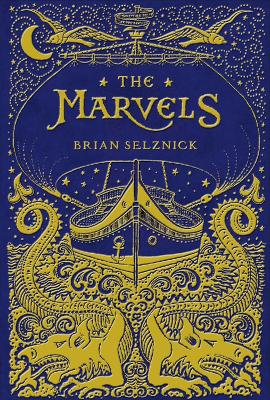Reviewed by nannah on
I definitely didn't expect this kind of depth when I picked this up! I'm not sure why, since a good friend recommended it to me, and she has really good taste. Maybe it's because I've read Brian Selznick's other works, and none of them really resonated with me the way this one has.
Book content warnings:
some unreality (if you dissociate easily)
grief & trauma
The first half (and very last bit) of this book is solely composed of illustrations--as anyone who's read Brian Selznick's other works are familiar with. Gorgeous pictures! The second half is where the "real" story comes in to play, and where the first half is explained (ish). The composition of the story (illustrations first, prose second) is actually part of the reason I love it so much. Kind of genius actually, because it's part of the book's major twist.
Joseph has run away in 1990 from his boarding school to London on the search for his Uncle Albert. He hopes to get his help in finding someone else: his friend who was removed from school mysteriously, leaving no way to be found. But when Joseph finds his uncle, he finds a house where time has stopped and a mystery (in the form of the first part of the book) he needs to solve. But as he tries to solve it, will it end up severing his fragile relationship with his uncle?
Again, I have to mention: the composition of this book is marvelous (ha). As a reader, you genuinely don't know what's happening before the characters, and the surprises and twists are genuinely eye-opening and amazing!
Besides that, characters and places are very painstakingly and lovingly created, even when given very little scene-time. Including the Uncle Albert's relationship with Billy, his late husband--yes, he's LGBT. :') It's also heavily implied that the main character, Joseph, is too, when the book returns to illustrative form at the very end--where it ends very sweetly and in the most satisfying way. In fact, the entire second half of the book seems to have "straight-baited" the audience instead of "lgbt-baiting" it, which almost makes me want to cry with happiness.
All in all, this was a wonderfully, carefully-crafted book, and I definitely need to buy the hardcover version to keep.
Reading updates
- Started reading
- 24 August, 2017: Finished reading
- 24 August, 2017: Reviewed
